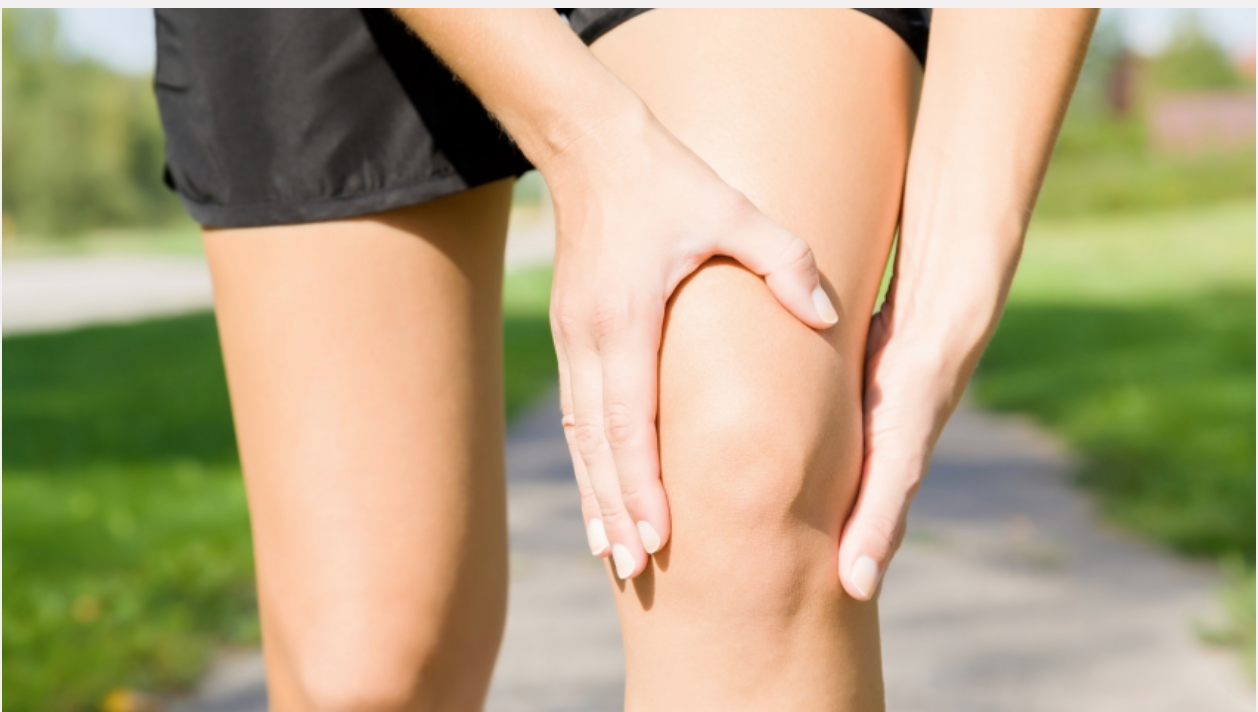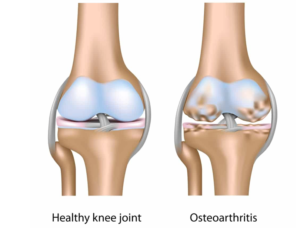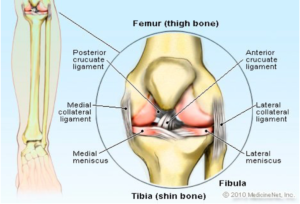
The knee joint is the largest joint in the human body and is also quite a complex one, as it is actually made up of 2 joints. There are 3 bones that form these two joints. They are the femur (thigh bone), tibia (shin bone) and the patella (knee cap). The bottom of the femur and the top of the tibia articulate to form the tibiofemoral joint whilst the patella and femur articulate to form the patellofemoral joint.
The knee is a hinge-type synovial joint, meaning its primary movements are flexion and extension, but we can also elicit a small amount of rotation medially and laterally. It functions by helping us walk and run, whilst at the same time, weight bearing and shock absorbing which leaves the knee prone to injuries. If we take the correct steps to ensure that our knees are strong and protected, the likelihood of injury decreases, and the process of degeneration slows down.
Your knees absorb a large amount of force with every step, typically one and half times your body weight. This causes wear and tear over time which ultimately weakens the surrounding muscles and ligaments. The two main shock absorbers (medial and lateral menisci) and the articular cartilage which protects the two ends of bone which meet to form the knee, start to deteriorate.
When deterioration starts to cause tissue damage, you may experience pain, stiffness and swelling. This is where your Osteopath can help!
Osteopaths can help improve range of motion and function of the lower limb which will take the load off the knee, slow down wear and tear and help improve symptoms and function.
Doing regular exercise that focuses on strengthening the lower limb and core will also help to improve knee function. Increasing muscle strength helps stabilise the knee and helps the muscles do their job by absorbing the force you put through your knee. An example of an exercise that targets the lower limb is a body squat. A body squat is a compound exercise that targets your core, hips, knees and ankles, making it the perfect exercise to improve lower limb strength.
The best thing about a squat is that you can do it anywhere! The bad thing about a squat is if you do it wrong, it can provoke injuries. To do a squat properly there are a few key steps to follow.
- Firstly, stand with your feet shoulder width apart and tighten and engage your abdominal muscles.
- Whilst engaged, slowly lower your body, without the assistance of your hands, like you are going to sit down on a chair.
- When you reach your limit on the downward phase, push up through your heels and feet into a standing position, making sure you really thrust your hips out for full affect.
When that becomes too easy for you, you can progress it by adding weight.
Doing regular exercise will also help you maintain a healthy weight. Weight gain can have a major impact on your knees as each kilogram you gain is 4kg of extra force your knee has to absorb!
If you take proper care of your knees, your knees will take care of you.
Dr. Tim Roberts
Ascot Vale Osteopathy
YOU MAY ALSO LIKE...
The Effect of Stress on your Immune System
As we all know, our lives right now are quite stressful as we try to deal with the containment of COVID-19. Things are happening now that have never happened in some people’s lifetimes which can be scary and confronting. It’s normal to be anxious abou...
read moreThe Perfect Bra for Your Recovery
When you have had an injury or are recovering from breast surgery, it's likely that you will experience limited movement and mobility. Working with an Osteopath is the first step to improving movement and reducing pain, but this is often part of a longer-...
read moreManual Therapy and Exercise – A Recipe for Success
There have been plenty of times throughout history where Osteopath’s and other manual therapists have been called magicians. While we will always take this as a compliment, the matter of fact is, it’s not (entirely) tru...
read moreStrengthen Your Core
What is your core? Your core is a group of muscles that sit in your torso. They stabilise and control the pelvis and spine. When most people think of their core, they envision a chiseled 6-8 pack. Unfortunately, the core goes ...
read moreTrain Your Mind
In most people’s lives, there comes a point in time where a certain part of your body will hurt. The pain may be caused by trauma or it may present insidiously. Some will ignore the pain until it disappears, others will t...
read moreInjury Prevention: How accurate can we be?
Injury prevention is an athlete's dream - Imagine being able to do what we love - exercise, sport, outdoor activities - without injury. How can we achieve this? Read on to find out…! read more
Understanding LDL Cholesterol: The Silent Culprit behind Car
In recent years, cardiovascular diseases have become a leading cause of morbidity and mortality worldwide. Among the numerous factors contributing to these conditions, LDL cholesterol has gained significant attention. LDL, or ...
read more


Share this news article online